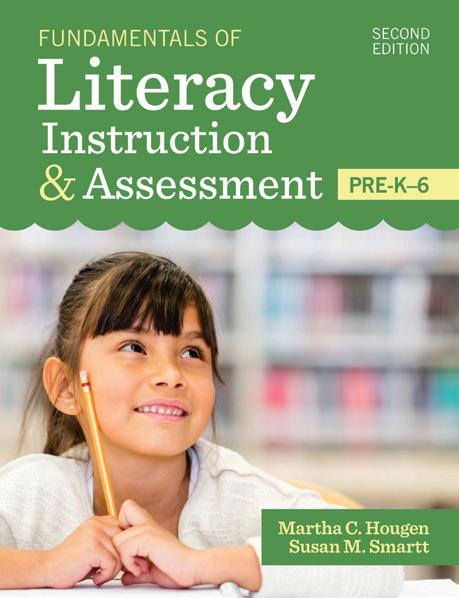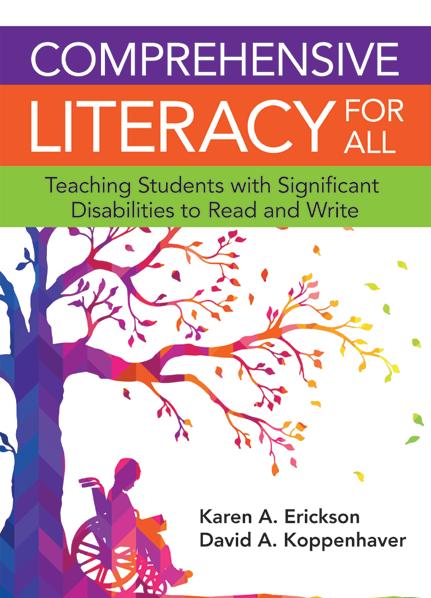TEXT







Writing is a task as complex and multifaceted as reading—but it’s often taught as a single skill. Prepare educators to plan and deliver comprehensive, explicit, and evidence-based writing instruction with this groundbreaking text, an instant bestseller aligned with IDA’s Structured Literacy approach and based on the latest research.
LAYING THE FOUNDATION FOR TEACHERS AND STUDENTS
to The Writing Rope
Know About Effective Writing Instruction?
Transcription Skills
Writing Craft
SKILLS AND STRATEGIES: LEARNING TO WRITE
Thinking: Stages of the Writing Process
Syntax and Sentence Skills
Structure: Paragraph Skills
Structure:
APPLICATIONS: WRITING TO LEARN

Summary Writing

Thinking:
Joan Sedita’s innovative Writing Rope weaves multiple skills and strategies into five fundamentals of a comprehensive writing curriculum: critical thinking, syntax (sentence structures), text structure, writing craft, and transcription (spelling and handwriting). Future teachers of Grades 4–8 will get crystal-clear guidelines that demystify the process of helping students learn to write and write to learn across academic content areas. And with dozens of included templates, handouts, and other resources—available for download online—teachers will have all the tools they need to design and deliver explicit, high-quality writing instruction.


• Learn the fundamentals of effective writing instruction. Get research-based background knowledge about writing development, the five components of the Writing Rope framework, and proven teaching strategies.
• See how to apply evidence-based practices in the classroom. Get ready to teach essential skills all students must learn to become proficient writers, focusing on critical thinking strategies for generating ideas and gathering information before writing, strategies for each stage of the writing process, syntactic awareness and sentence writing, paragraph writing, and skillful structuring of different types of text.
• Prepare to help students “write to learn.” Learn how to plan effective writing assignments in different content areas, and explicitly teach students skills for summarizing texts and writing about narrative and expository text.
PRACTICAL MATERIALS: Classroom activities, Connect to Your Classroom questions, suggestions for scaffolding, a Writing Assignment Guide to use with any grade or content area, and 40+ reproducible instructional resources for students and teachers.

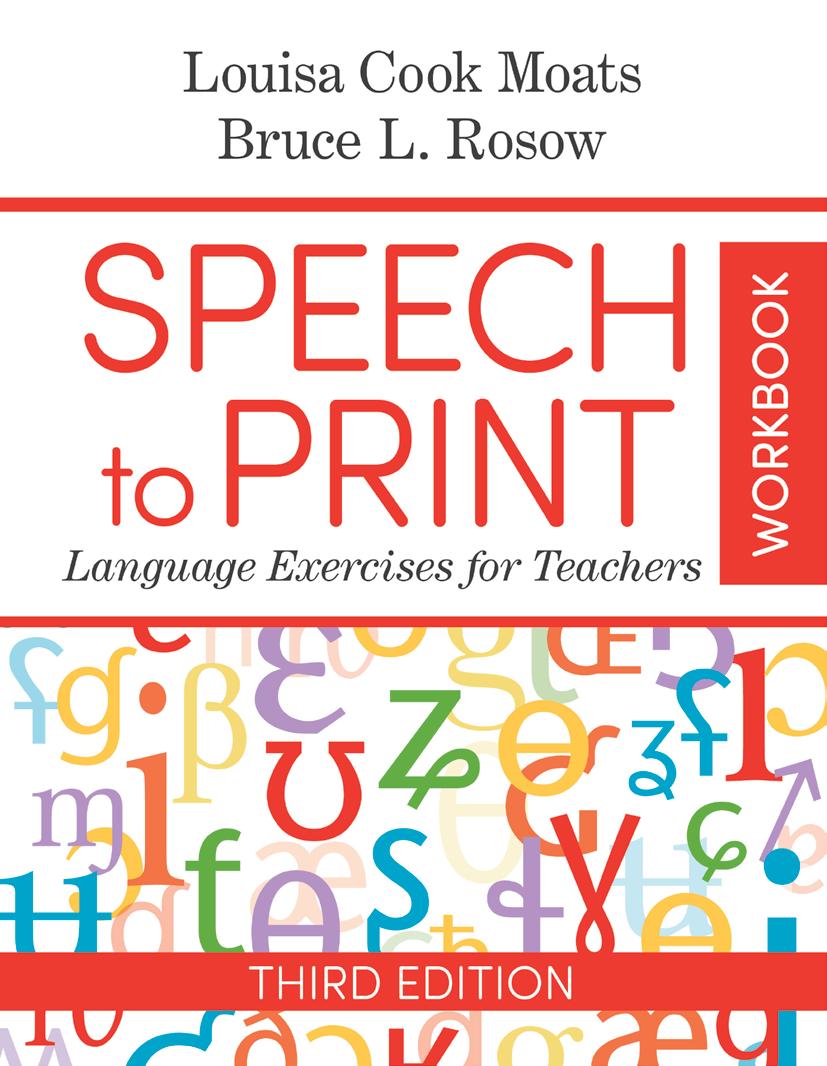
BOOK by Louisa Cook Moats, Ed.D. (Moats Associates Consulting, Inc.)
WORKBOOK by Louisa Cook Moats, Ed.D., & Bruce Lyons Rosow, Ed.D. (Windham Central Supervisory Union)
For two decades, the Speech to Print book and workbook have been bestselling resources on explicit, high-quality literacy instruction. Now the third editions are here, updated for today’s K–12 educators.
THE BOOK: Filling a critical gap in teacher preparation courses, Speech to Print supplies in-depth knowledge of the structure and function of language— fundamentals your students will need to deliver successful structured literacy instruction. Renowned literacy expert Louisa Cook Moats gives future teachers comprehensive and accessible information on the underpinnings of language instruction, plus case studies, activities, recommended teaching principles, and analysis of real-world student work samples.
WHAT’S NEW:
• New and expanded practical content on the how of language and reading instruction
• New and updated chapter exercises
• New faculty support materials, including chapter quizzes, a sample syllabus/course outline, PowerPoints, and PDF handouts for selected concepts
• More on key topics like program and curricula selection, frameworks for instructional planning, and problem solving when students are slow to respond to intervention
• More accessible, undergraduate-friendly tone and structure
THE WORKBOOK: The ideal companion to the third edition of the bestselling Speech to Print text, this workbook helps teachers practice their skills and prepare to deliver high-quality reading instruction.
WHAT’S NEW:


More than 30 new exercises not found in the Speech to Print textbook
Extensive new content and exercises addressing syntax and semantics

New chapter quizzes to reinforce teachers’ knowledge of language building blocks
Exercises that provide models and tips for teaching select concepts to students
A new final course exam
Comprehension is a primary ingredient of reading success—but most educators aren’t taught how to deliver structured comprehension instruction in their classrooms. Future K–8 teachers will find the guidance they need in this groundbreaking text from Nancy Hennessy, former IDA President and an expert on reading comprehension.

Meticulously researched and masterfully organized, this book offers a clear blueprint for understanding the complexities of reading comprehension and delivering high-quality, evidence-based instruction that helps students construct meaning from challenging texts. Aligned with the science of reading and IDA’s Structured Literacy approach, this book is an ideal supplement to pair with core literacy textbooks.

• Get critical background knowledge. Synthesizing decades of research on reading comprehension, this book provides educators with all the fundamentals they need to teach this key component of reading proficiency.
• Master the blueprint. Preservice teachers will get a complete framework for organizing instruction, aligned with the language comprehension strands of Scarborough’s Reading Rope. In-depth chapters are devoted to each facet of reading comprehension, including vocabulary, syntax and sentence comprehension, text structures, background knowledge, and levels of understanding and inference.
• Make it work in the classroom. The text offers practical guidance and tools for planning their units and lessons, adapting to the needs of individual students, and assessing student progress. (Interactive book study guide also included!)
in
plans,


their practices.
unit and lesson plan organizers, can be
classroom.

More than 5 million English learners attend U.S. public schools—and yet fewer than 3% of teachers are certified to work with them.* Fill that gap in teacher education with this comprehensive textbook, an evidence-based guide to providing English learners in Pre-K–Grade 6 with explicit, systematic instruction on language and literacy fundamentals.
Aligned with IDA’s Knowledge and Practice Standards, this book prepares current and future educators to teach English learners the key components on language and literacy, as described in the Report of the National Literacy Panel for Language Minority Children and Youth. For each component, teachers will get a dedicated chapter with research-based insights on how to teach English learners, guidance on making connections across languages when teaching that component, and ready-to-use principles and strategies for instruction. Learning objectives, study questions, and extended application activities help educators grow their knowledge and apply it in their classrooms.



• Enter their classroom with a full understanding of the language and literacy development of English learners
• Teach English learners key components of language and literacy: phonological awareness, phonics, vocabulary, fluency, comprehension, spelling, and writing skills
• Apply insights from current, reliable research on how best to teach English learners
• Use specific, evidence-based principles, strategies, activities, and sample teacher–student dialogues to guide and strengthen instruction
Leverage technology to adapt and enhance instruction for English learners
ONLINE COMPANION MATERIALS INCLUDED: Faculty will get helpful PowerPoint slides for each chapter, plus a sample syllabus that shows how to use this book in your course.
Teaching Literacy Skills to English Learners
Language and Literacy Development
Components of Literacy Instruction for English Learners
Phonological Awareness Development Among Eng lish Learners
Phonics Development among English Learners
Reading Fluency among English Learners
Vocabulary Instruction among English Learners
Reading Comprehension among English Learners
Spelling Development among English Learners
Written Language among English Learners
Technology to Adapt and Enhance Instruc
English Learners
FOUNDATIONAL
Edited by Martha C. Hougen, Ph.D. (Consultant and Author, Woodland Hills, CA), & Susan M. Smartt, Ph.D. (former Senior Research Associate, Vanderbilt University), with invited contributors
Understand the science of reading and how to implement evidence-based instruction to increase the reading and writing achievement of pre-K–6 students. Fully revised and updated, this core text covers the research base for structured literacy instruction and practical guidance on the essential components of literacy instruction.
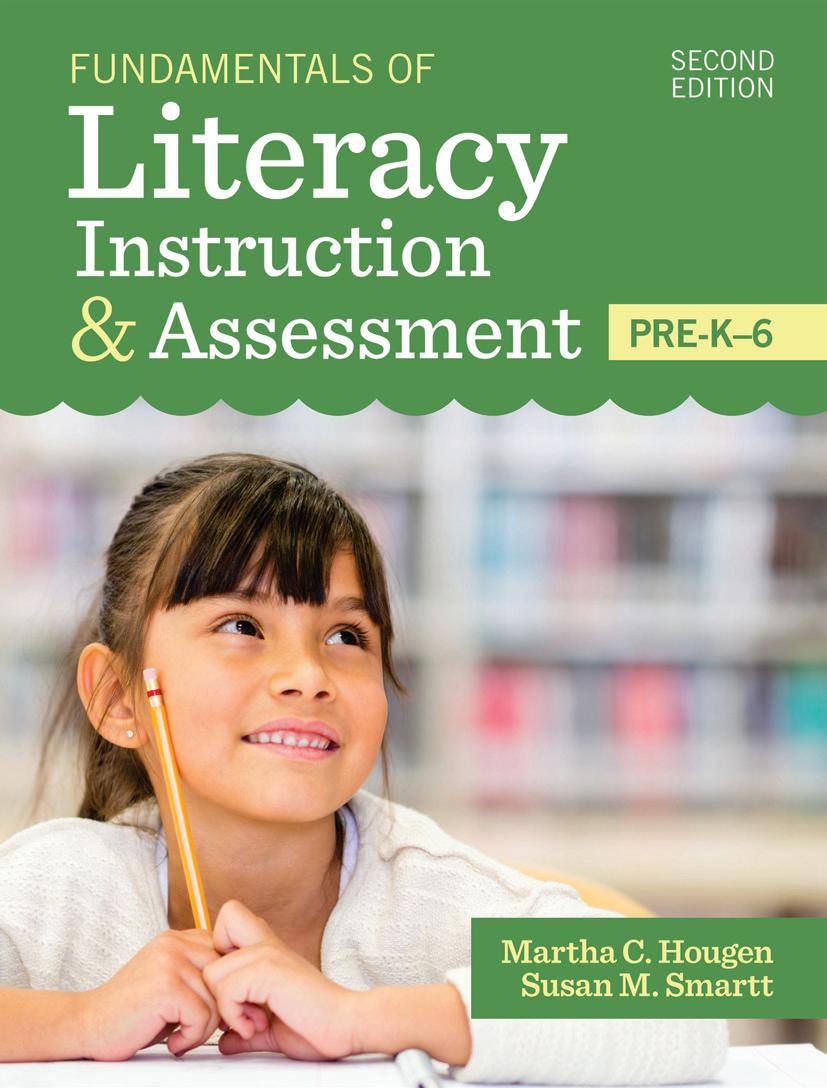
by the 2020 National Council on Teacher Quality’s Teacher Prep Review as an exemplary text covering all five elements of effective reading instruction.
Woven throughout this new edition are proven strategies for effective explicit, systematic instruction. Instructional activities, scripted demonstrations of lessons, and online resources give readers examples to apply the research into classroom instruction. Engaging, pragmatic, and accessible, this book is an essential text for preservice teacher candidates.
WITH ONLINE COMPANION MATERIALS: Online Resource Appendix addressing each topic, PowerPoint slides, answer keys for the Knowledge Assessment questions, sample lesson plans and syllabi.
NEW CHAPTERS ON: assessment basics • standards to guide instruction • development of social-emotional skills and early language • advanced word study • English learners • supportive technology • role of reflection in planning instruction
REVISED CHAPTERS ON: instruction to develop phonological/ phonemic awareness • handwriting, spelling, writing and spelling • fluency • vocabulary • comprehension • disciplinary literacy • integrated lesson plans
INFORMATION ON: structured literacy • data-based
making
MTSS
metacognitive awareness

assessments to guide instruction
formal
standards-based

Common Core State Standards and the

Standards for Teachers of
FEATURES: reflections to encourage critical thought
questions
application activities
vignettes,
Literacy improves lives—and with the right instruction and supports, all students can learn to read and write. That’s the core belief behind this student-friendly textbook, an essential guide to providing comprehensive, high-quality literacy instruction to students with significant disabilities.
Drawing on decades of classroom experience, the authors present their own innovative model for teaching students with a wide range of significant disabilities to read and write print in grades preK–12 and beyond. Foundational teaching principles blend with concrete strategies, step-by-step guidance, and specific activities, making this textbook a complete blueprint for helping students acquire critical literacy skills they’ll use inside and outside the classroom.
An ideal text for courses that cover literacy and significant disabilities, this book will help future educators ensure that all students have the reading and writing skills they need to unlock new opportunities and reach their potential.
• Discover 10 success factors for helping students with significant disabilities become literate
• Prepare to teach emergent readers and writers skillfully, with evidence-based strategies for shared and independent reading, early writing instruction, and alphabetic and phonological aware ness
• Learn how to help students acquire conventional literacy skills, with adaptable strategies for teaching reading comprehension, vocabulary, writing, decoding, and spelling
• Get ready to organize and deliver comprehensive literacy instruc tion in a variety of settings, both inside and outside of school
• See how to use assistive technology effectively to support read ing, writing, and communication
• Learn tips on how to engage and motivate students and make literacy instruction meaningful to their everyday lives
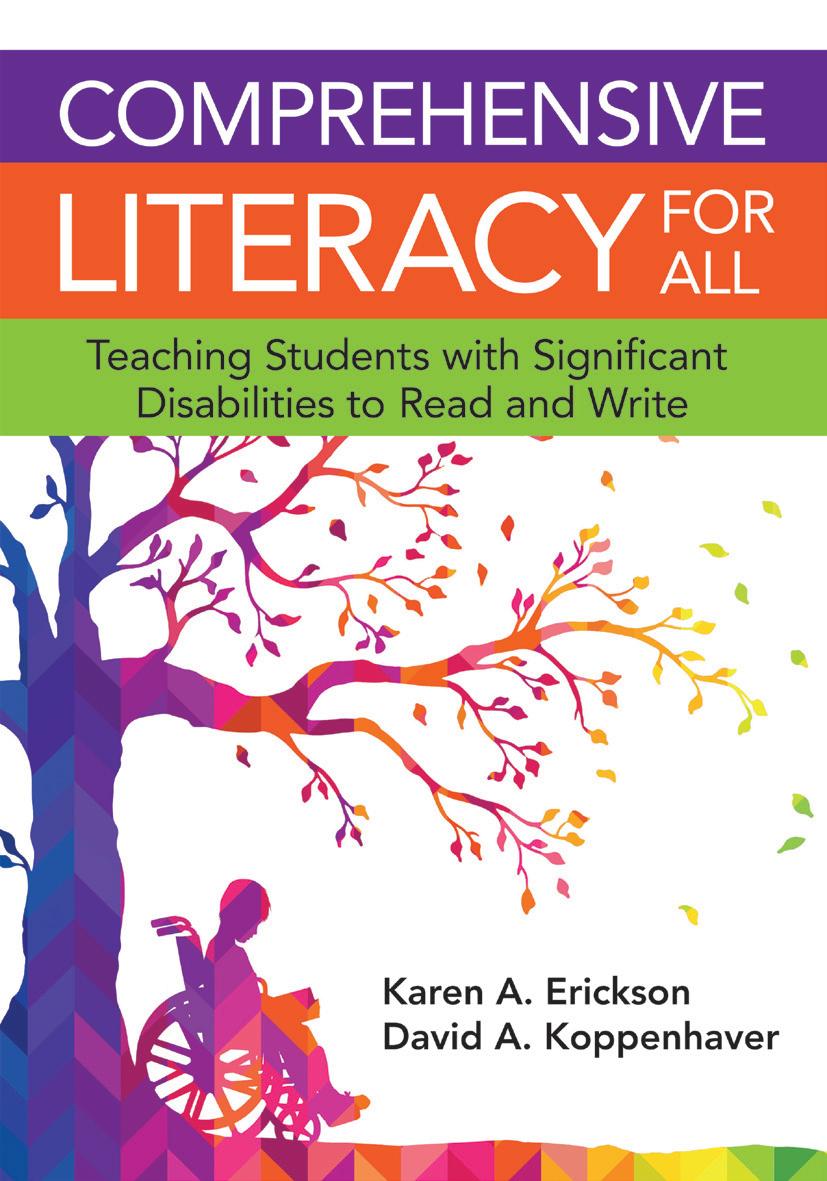
PRACTICAL MATERIALS: Sample teaching scenarios and dialogues, how-to strategies, and downloadable resources, including sample lessons, a quick-guide to key literacy terms, lesson sequences, and flowcharts to guide instruction.
All Children Can Learn to Read and Write: A Theoretical Rationale
Establishing the Environment for Successful Literacy Learning
BUILDING A FOUNDATION
Alphabet Knowledge and Phonological Awareness
Emergent Reading
Emergent Writing
LEARNING TO READ AND WRITE
Comprehensive Literacy Instruction: A ResearchBased Framework
Reading Comprehension and Vocabulary Instruction
Self-Directed Reading: Supporting Motivation and Fluency
Writing


Decoding, Word Identification, and Spelling
IMPLEMENTATION
Using Assistive Technology Effectively to Support Literacy
Organizing and Delivering Effective Instruction

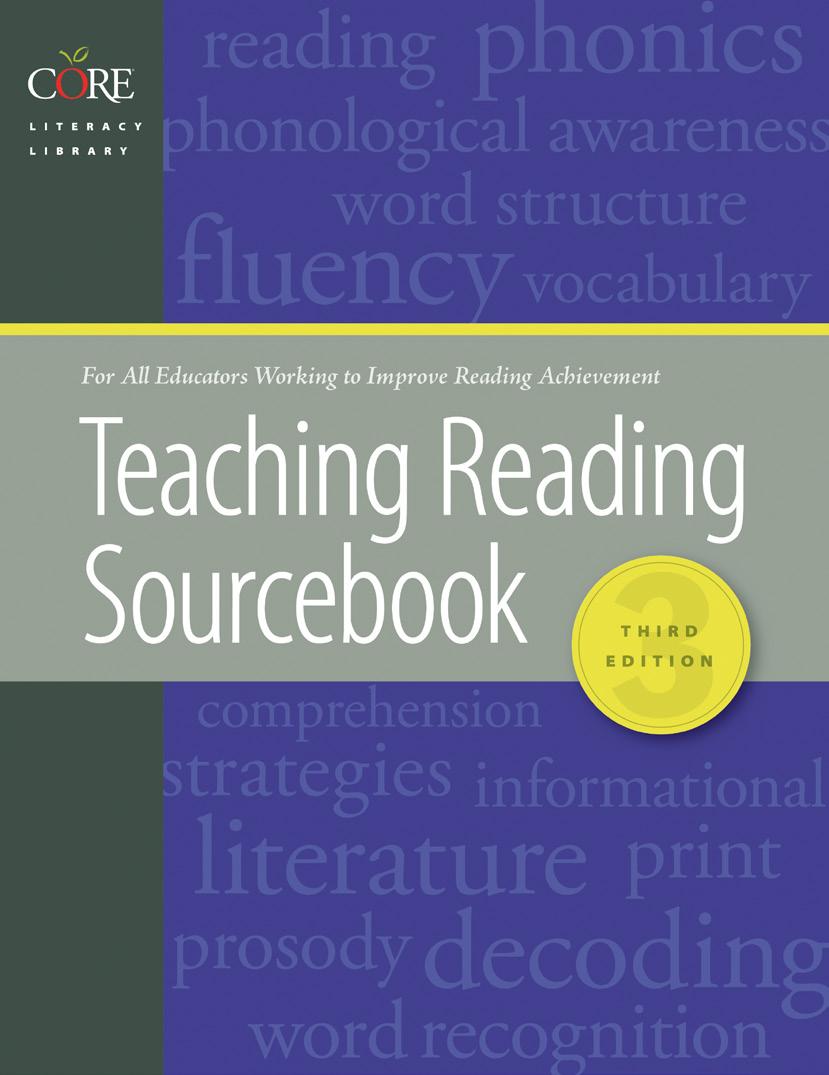

“I’ve used the Sourcebook for my courses on early reading and reading intervention. My students have always commented on its usefulness for understanding the science of reading development and its application to effective teaching.”
—David Chard, President, Wheelock College
by the 2020 National Council on Teacher Quality’s Teacher Prep Review as an exemplary text covering all five elements of effective reading instruction.
A bestselling, research-based text on effective reading instruction, the Teach ing Reading Sourcebook helps future educators bridge the gap between evidence-based reading research and actionable instruction strategies. Orga nized according to the guiding ques tions behind explicit instruction (what?, why?, when?, and how?), this third edition includes both a researchinformed knowledge base and practical sample lesson models that teachers can use in their classrooms. Preservice educators will learn about five key elements of an effective reading program—phonemic awareness, decoding, vocabulary development, fluency, and compre hension—and they’ll get teaching tips and intervention strategies to help them put principles into practice.
essential, hands-on text for professional preparation, this book is a must-have for educators at every level.


BOOK edited by Judith R. Birsh, Ed.D., CALT-QI (independent literacy consultant), & Suzanne Carreker, Ph.D., CALT-QI (Lexia Learning Systems)

ACTIVITY BOOK by Suzanne Carreker, Ph.D., CALT-QI, & Judith R. Birsh, Ed.D., CALT-QI
Listed by the 2020 National Council on Teacher Quality’s Teacher Prep Review as an exemplary text covering all five elements of effective reading instruction.
With the fourth editions of this bestselling textbook and activity book, you’ll fully prepare a new generation of educators to use the highly respected multisensory teaching approach to literacy.
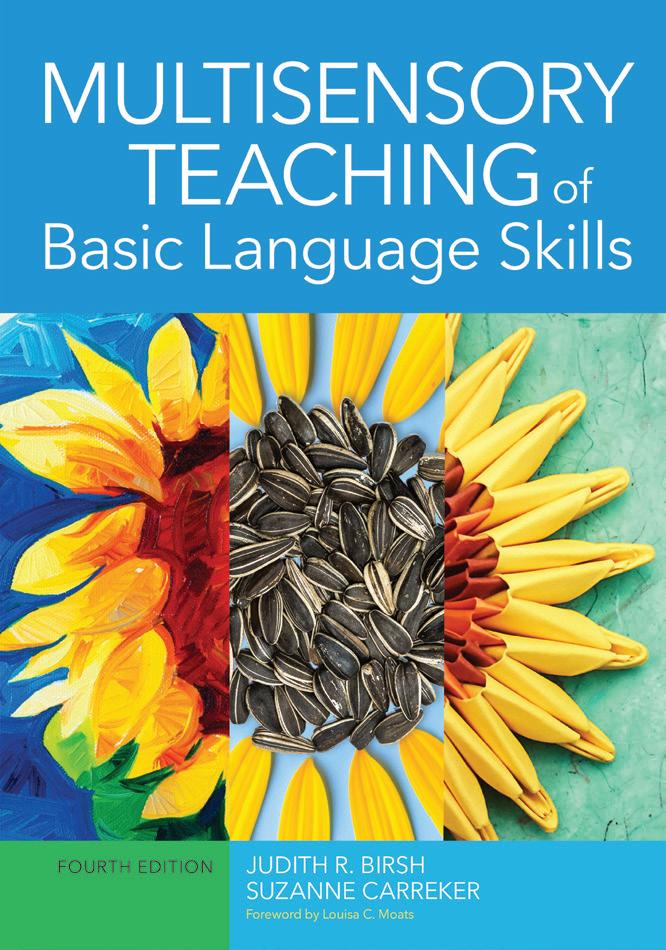
In the textbook—the most comprehensive text available on multisensory teaching— your students will get timely new information on using multisensory literacy approaches effectively with K–12 students who have dyslexia and other learning disabilities. Updates include:
• New chapters on prekindergarten literacy, executive function, and math learning disabilities
Content aligned with the 2018 IDA Knowledge and Practice Standards for Teachers of Reading; prepares students for the IDA certification exam

• The latest research in the field
New insights and guidance on technology
• Online companion materials and resources
More student-friendly features, including learning objectives, reflection questions, and new case studies
In the activity book, your students will get more than 100 activities that boost their knowledge in all the areas covered in the textbook. The updated edition includes NEW activities on executive function, prekindergarten literacy, and math learning disabilities.
Connecting Research and Practice
Structured Literacy Instruction
Oral Language Development and Its Relationship to Literacy
Pre-Kindergarten Literacy
Alphabet Knowledge: Letter Recognition, Letter Naming, and Letter Sequencing
Teaching Phonemic Awareness
Assessment of Reading Skills: A Review of Select Key Ideas and Best Practices
The Role of Executive Function in Literacy Instruction
Teaching Reading: Accurate Decoding
Teaching Spelling
Multi-Modal Handwriting Instruction for Pencil and Technology Tools
Fluency in Learning to Read: Conceptions, Miscon ceptions, Learning Disabilities, and Instructional Moves
Math Learning Disabilities


The History and Structure of Written English
Working with Word Meaning: Vocabulary Instruction
Strategies to Improve Reading Comprehension in the Multisensory Classroom
Composition: Evidence-Based Instruction
Designing the Learning Environment and Planning Multisensory Structured Literacy Lessons
Language and Literacy Development Among English Language Learners
Instruction for Older Students with a Word-Level Reading Disability
Working with High-Functioning Adults with Dyslexia and Other Academic Challenges
THE FOUNDATIONS OF LITERACY AS
HUMAN RIGHT
EVIDENCE-BASED COMPREHENSIVE LITERACY INSTRUCTION

What are today’s best methods for teaching literacy skills to students with complex support needs—including autism, intellectual disability, and multiple disabilities? This comprehensive guidebook has up-todate, evidence-based answers for pre- and in-service educators.
Developed by Copeland and Keefe, the experts behind the landmark book Effective Literacy Instruction for Students with Moderate or Severe Disabilities, this thoroughly reimagined follow-up reflects 10 years of ground-breaking research and advances in the field. You’ll discover current recommended practices on critical topics, including how to build vocabulary, increase word recognition, enhance fluency, address cultural and linguistic diversity, and use academic standards when designing instruction. You’ll also get the guidance you need to put theory into practice: lesson planning strategies, practical examples, and case studies that bring key principles of instruction to life.
Whether used as a text for teachers in training or a guide for practicing educators, this book will help teachers of Grades K–12 increase access to literacy and prepare all learners for successful communication, employment, and community life.
THIS EDITION:
section on literacy as a human right for all learners (the “why” of instruction)
Chapters
how to design engaging learning environments
today’s assistive technology



The Brookes Download Hub is your home base for the online course materials— slides, test banks, sample syllabi, and more—that come with Brookes books. Sign up with your faculty email address to download companion materials, “favorite” your books to keep track of your online materials, and get free access to companion materials for ALL Brookes books. Registration is easy—sign up today! https://downloads.brookespublishing.com

You can request exam/desk copies of up to two books that are relevant to your course needs. If you see a book in this catalog that you’re interested in previewing, please look it up on www.brookespublishing.com, click the Request Exam Copy button found on the book’s page, and complete the request form. (All requested information must be supplied before we can process your order.)



